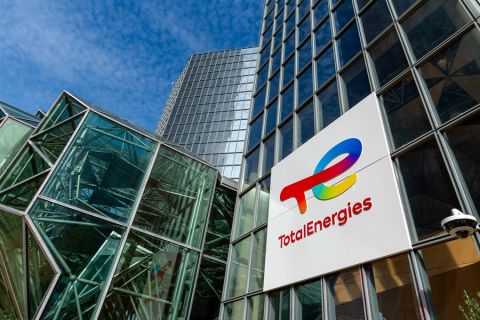
(Source: iStock; Energy Workforce & Technology Council)
Presented by:

Editor's note: This article appears in the special OTC edition of the E&P newsletter. Subscribe here.
The 2021 Offshore Technology Conference begins during a period of significant change in the energy industry, pushed and pulled by an array of factors, including investors, government policy, technology development and implementation, and consumer preferences. As we enter this era of transition, it’s important for the industry to work cooperatively with stakeholders to create sound policy that empowers energy companies to deliver the innovations necessary to make the dream of abundant, affordable and lower carbon energy a reality.
At the Energy Workforce & Technology Council, we’re working with lawmakers and regulators nationwide to craft sensible and realistic policies that acknowledge the need for reducing emissions while also improving affordability, reliability and resilience. With each legislator, we’re sending the message that energy policy should not be a partisan issue. These are technical problems with solutions. America has abundant energy resources, and we shouldn’t sideline them because of ideology.
The services and equipment sector is ready to provide the solutions we need. We’ve already shown a preview of what’s possible. Since 2005, the U.S. increased power generation 4% while reducing carbon emissions 27%, mostly by switching from coal to cleaner-burning natural gas. At every meeting with policymakers, we’re driving the message that a realistic energy policy must include natural gas to provide reliability, resilience and affordability.
Given what’s at stake, it’s vital for the industry to work through the Council and other industry organizations to engage with government officials because policy could go either direction. The federal government could impose ideological restrictions and mandates that starve the technology and services sector of the capital and resources needed to deliver breakthrough innovations we need. Or, with smart policy, public and private sectors can invest in the people who innovated in the past to overcome energy challenges on a global scale, and who are positioned to deliver them again.
The Council and its allies are addressing key strategic issues to empower members to help achieve the goals of clean, abundant and affordable energy. Among these critical issues:
- Resilient Workforce: The Council’s analysis of Bureau of Labor Statistics data showed the energy services and technology sector lost more than 100,000 jobs due to the COVID-19 pandemic. While some positions are returning, the lost experience and expertise could have long-term impacts. Because a resilient workforce is essential to energy’s future, the Council advocates at the state and federal level on policies that impact energy workers could hurt local communities or could undermine local government revenues and U.S. energy security.
- Clean Energy and R&D: Developing the new technologies we’ll need can be accomplished through R&D initiatives, industry investments and public-private partnerships. With smart investments, oil and gas producers and their service partners can stay at the vanguard of innovation and assure a reliable and resilient energy transition. Energy services companies are solution providers, and the Council reminds policymakers that the sector’s technology is one of best resources to lower carbon emissions.
- Access to Energy Resources: America has a wealth of energy resources, which should be responsibly developed and produced in the cleanest way possible to maintain vital government revenue streams, preserve U.S. energy independence and continue providing high-paying jobs.
- Access to Free Markets: A balanced approach to tariffs and trade should address illicit practices and establish a level playing field for U.S. companies. With stakeholder input, the Council is working to address unfair trade practices, narrow the trade gap and end forced technology transfers and corporate espionage.
America has vast oil and gas resources, which can create high-paying U.S. jobs while slashing carbon emissions around the globe and improving national security by providing a reliable domestic energy supply. Advancing toward a lower-carbon energy future while facing increased energy demand is daunting, but we’ve accomplished even larger objectives before. The ingenuity of the men and women of the energy sector can lead the world through this transition and ensure we have the energy needed to grow and thrive.
Recommended Reading
TotalEnergies to Acquire Remaining 50% of SapuraOMV
2024-04-22 - TotalEnergies is acquiring the remaining 50% interest of upstream gas operator SapuraOMV, bringing the French company's tab to more than $1.4 billion.
TotalEnergies Cements Oman Partnership with Marsa LNG Project
2024-04-22 - Marsa LNG is expected to start production by first quarter 2028 with TotalEnergies holding 80% interest in the project and Oman National Oil Co. holding 20%.
Is Double Eagle IV the Most Coveted PE-backed Permian E&P Left?
2024-04-22 - Double Eagle IV is quietly adding leases and drilling new oil wells in core parts of the Midland Basin. After a historic run of corporate consolidation, is it the most attractive private equity-backed E&P still standing in the Permian Basin?
Brett: Oil M&A Outlook is Strong, Even With Bifurcation in Valuations
2024-04-18 - Valuations across major basins are experiencing a very divergent bifurcation as value rushes back toward high-quality undeveloped properties.
Marketed: BKV Chelsea 214 Well Package in Marcellus Shale
2024-04-18 - BKV Chelsea has retained EnergyNet for the sale of a 214 non-operated well package in Bradford, Lycoming, Sullivan, Susquehanna, Tioga and Wyoming counties, Pennsylvania.




